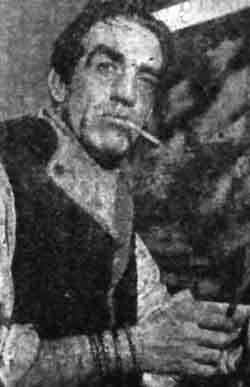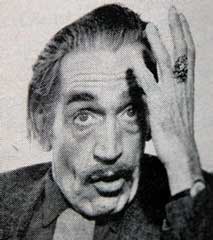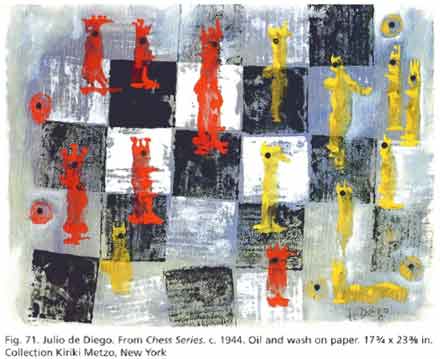|


Julio de Diego
Time Magazine - Monday, Feb. 01, 1954
Soon after he came to the U.S. from Spain in 1924, Painter Julio de Diego found
himself with exactly 25¢ to his name. He paid a dime for a ride to the top of
the Woolworth Building (then the world's tallest), and gaily flung the other 15¢
over Manhattan's skyline. Says De Diego: "I wanted to start from scratch."
...
In his 53 years, wiry, cadaverous De Diego (who claims that he has gypsy blood)
has tried his hand at everything from bullfighting to being the husband of a
stripteaser. The son of a Madrid jeweler, Julio (pronounced "Hoolio'' even in
Manhattan) left home at the age of 15, when his father objected to his artistic
bent. He painted scenery for the Madrid opera, danced in Serge Diaghilev's
ballet, went into the Spanish army to fight the Rifs in Africa. In 1923 De Diego
set out to see the world. After his defiant gesture atop the Woolworth Building
he got a job doing fashion illustrations, painted murals for kitchens and
bathrooms, designed menus.
He had his first major show in Chicago in 1932, was recognized as a promising
new artist. Among his favorite subjects are the Machine Age's giant factories
and towering cities. Probably his best-known painting is The Portentous City,
1942-43, a vertical view of Manhattan's clustered skyscrapers, which hangs in
Manhattan's Metropolitan Museum of Art.
...
In 1948, De Diego splashed onto the front pages by marrying Ecdysiast Gypsy Rose
Lee, who declared: 'Julio and I can be happy together. I'm working on a play,
Julio has his art, and we spend our evenings together." This bliss did not last,
although the De Diegos are still legally married and remain good friends. Says
Julio: "I was not cut out to be prince consort. What is a man that he should
have to follow his wife around?" Julio now lives alone in a grubby, two-room
Manhattan studio, where he prominently displays a skull which he jokingly
introduces to visitors as his-late father's.

According to Larry List's Book, Imagery of Chess
Revisited:
The Chess Series painting shows
each figural chess piece in totemic isolation from the others. The pieces of the
two opposing sides, depicted in silhouette and using tonal variations of either
red or yellow, suggest the scale and physical tangibility of hand-sized clay
figures, reminiscent of Max Ernst's 1929 plaster chess pieces. The combination
of the thin, dark wash tones with the opaque highlights also lends these chess
glyphs an ephemeral translucence.
De Diego's chessboard appears to have been made using a standard ceramic floor
tile slathered with paint to print alternate black and white squares on paper.
The grid becomes more faded and erratic as it approaches the painting's edge, as
if implying a disintegration of order over a ritual battlefield. The scale of
the squares and the pattern suggest an aerial view of a chessboard, or of a tile
floor. Emphasizing the spatial play between the figures in profile and the
aerial view of the grid, de Diego used the eraser of a lead pencil to stamp a
black circular "eye" onto each piece, which, similar to the gesture Marcel
Duchamp made in his Pocket Chess Set, pins each piece to its square while
visually skewering the viewer.
|

